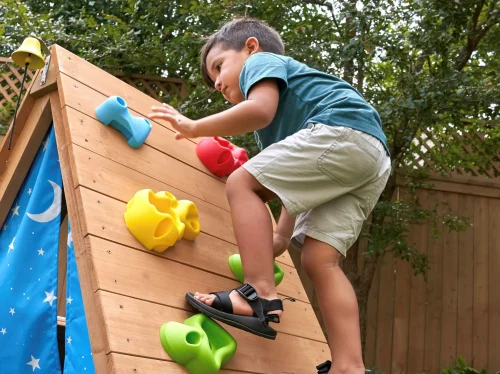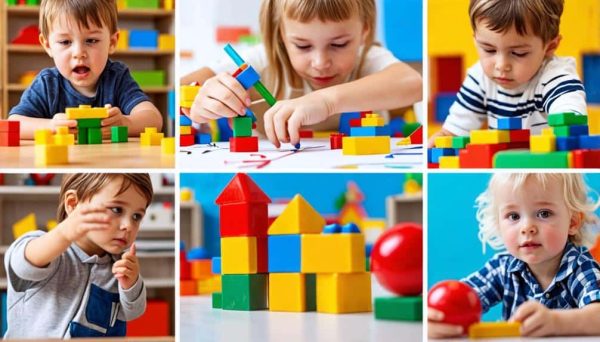Motor skills play a crucial role in a child’s overall development. They are divided into two main categories: fine motor skills activities and gross motor skills activities. But what are motor skills, and how do they impact a child’s growth? This blog will guide you step-by-step on how to improve fine motor skills in children with engaging activities that promote learning and development.
What Are Motor Skills?
Motor skills are movements that involve the coordination of muscles to perform specific tasks. They are categorized into:
- Fine motor skills: These involve small muscle movements, primarily in the hands and fingers, helping children with activities like writing, buttoning clothes, and picking up small objects.
- Gross motor skills: These involve larger muscle groups that help in walking, running, jumping, and other full-body movements.
Both motor skills activities are essential for a child’s development, as they contribute to muscle strength, hand-eye coordination, and overall dexterity. Developing strong motor skills from an early age helps in writing, self-care routines, and sports performance. The earlier children begin practicing these skills, the better they will perform in daily life and academic activities.

Step-by-Step Guide to Fine Motor Skills Activities
Step 1: Strengthening Hand Muscles
Before improving precision, children need to build strength in their hand and finger muscles. Some effective fine motor skills activities include:
- Playdough Fun: Encourage kids to squeeze, roll, and shape playdough, which helps strengthen their hand muscles and improve grip control.
- Sponge Squeezing: Let them squeeze water out of sponges to strengthen their grip and build hand endurance.
- Tweezer Games: Use tweezers or tongs to pick up small objects like pom-poms, which enhances pincer grasp and hand strength.
- Clothespin Pinching: Have children clip clothespins onto a string or container, improving finger strength and coordination.
- Stress Ball Exercises: Let children squeeze stress balls to enhance grip strength and reduce tension in hand muscles.
- Tearing Paper: Have kids tear pieces of paper into small bits to strengthen their fingers and hand muscles.

Step 2: Enhancing Hand-Eye Coordination
Hand-eye coordination is essential for motor skills activities and overall body control. Try these fine motor skills activities to improve coordination:
- Threading Beads: Have kids string beads onto a shoelace or pipe cleaner to refine coordination.
- Pegboard Activities: Let them insert pegs into holes to develop precision and dexterity.
- Sticker Play: Peeling and sticking stickers can improve finger strength and accuracy.
- Lacing Cards: Provide lacing cards with holes and let children thread shoelaces through them to enhance fine motor control.
- Popping Bubble Wrap: This fun activity enhances finger strength and coordination while providing sensory input.
- Stacking Cups and Blocks: Have children stack items to develop their ability to control small objects with precision.

Step 3: Practicing Precision and Control
To refine motor control, introduce activities that require careful hand movements. These fine motor skills activities are great for improving accuracy:
- Cutting with Safety Scissors: Provide different shapes and encourage them to cut along lines to develop hand strength and coordination.
- Tracing and Coloring: Have kids trace letters, shapes, and color within boundaries to improve pencil control and hand stability.
- Pencil Control Games: Let them practice drawing lines, zigzags, and spirals to build muscle memory and writing readiness.
- Stacking Blocks or Coins: Stacking objects requires precise control and patience, improving fine motor skills.
- Dot-to-Dot Worksheets: These help children practice grip, control, and coordination while following sequential patterns.
- Origami and Paper Folding: This activity enhances fine motor skills by requiring precise finger and hand movements.

Step 4: Everyday Practical Fine Motor Skills Activities
Incorporating motor skills activities into daily routines makes learning effortless. Try these practical exercises:
- Buttoning and Zipping Clothes: Encourage children to dress themselves to practice fine motor coordination.
- Opening and Closing Containers: Give them jars, boxes, or zipper pouches to practice opening and closing lids, improving grip strength.
- Using Utensils: Allow them to eat with a spoon, fork, and chopsticks to build control over wrist and finger movements.
- Pouring Activities: Let children practice pouring water, rice, or beads from one container to another to enhance wrist and hand coordination.
- Tying Shoelaces: Learning to tie shoelaces improves finger dexterity, problem-solving, and hand coordination.
- Fastening Belts and Buckles: These daily tasks help refine motor precision and increase independence.
- Brushing Teeth and Combing Hair: Encouraging children to complete grooming tasks helps improve their hand control and movement precision.

How to Improve Fine Motor Skills Alongside Gross Motor Skills?
While focusing on fine motor skills activities, integrating gross motor skills activities can enhance overall coordination and physical development. Some combined activities include:
- Climbing and Gripping: Using playground structures strengthens fingers, hands, and arms while improving full-body coordination.
- Ball Games: Catching, throwing, and rolling balls help in hand strength, balance, and motor planning.
- Yoga for Kids: Simple yoga poses enhance both fine and gross motor skills by improving flexibility and muscle engagement.
- Obstacle Courses: Setting up an obstacle course with tunnels, balance beams, and climbing elements helps children develop coordination and control.
- Dancing and Finger Play Songs: Movements like fingerplays (e.g., “Itsy Bitsy Spider”) and dance routines encourage full-body and hand coordination.
- Jump Rope and Hula Hooping: These activities strengthen the wrists, arms, and core while enhancing coordination between large and small muscles.
Additional Tips for Parents and Educators
- Encourage Multi-Sensory Play: Use textured materials like sand, rice, or water beads to engage children’s senses while improving motor skills.
- Provide the Right Tools: Use child-sized scissors, thick crayons, and adapted utensils to support skill development.
- Make Activities Fun and Engaging: Turn everyday tasks into playful challenges to keep children motivated.
- Monitor Progress: Keep track of improvements and gradually introduce more complex activities as their skills advance.
- Be Patient and Supportive: Every child develops at their own pace, so provide encouragement and celebrate small achievements.
- Limit Screen Time: Excessive screen time can hinder fine motor skill development; encourage hands-on play instead.
- Create a Play-Based Learning Environment: Provide opportunities for structured and unstructured play to enhance both fine and gross motor skills.
Final Thoughts
Fine motor skills are vital for a child’s independence, academic success, and daily activities. By engaging them in fun, everyday motor skills activities, parents and educators can support their growth effectively. Understanding what are motor skills and how to improve fine motor skills through engaging activities can set children on the path to success.
Try these activities with your little ones and watch their skills flourish! Consistency and practice are key to developing strong motor abilities that will benefit them for a lifetime.

